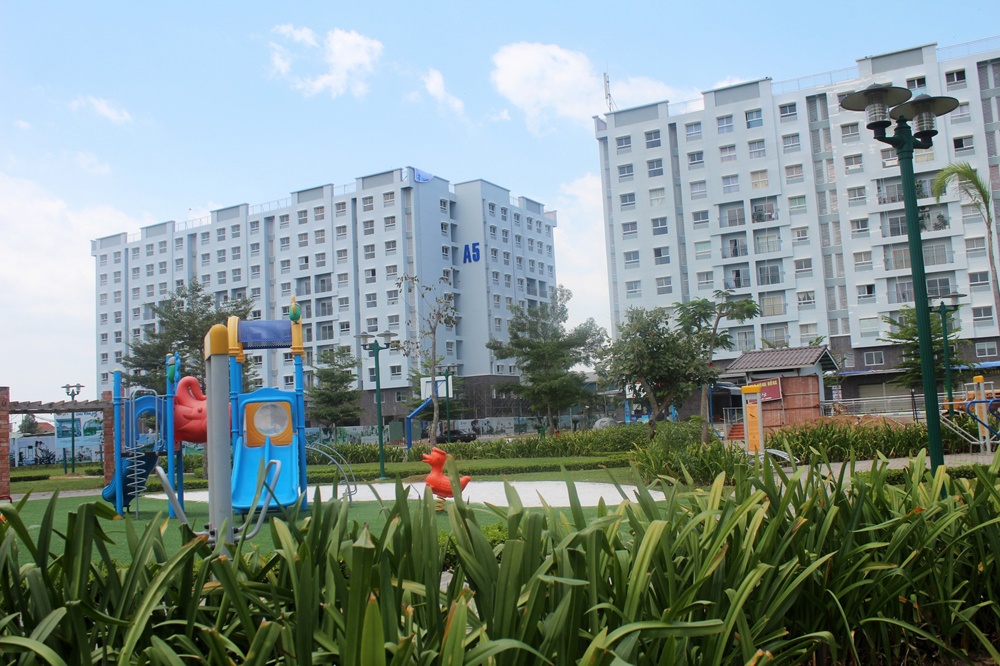In 2015, thanks to a VND30-trillion home loan program launched by the Government, Ms Hang, who works in District 3, Ho Chi Minh City, bought a two-bedroom apartment in the Hung Ngan Garden project in District 12. After making a 30% downpayment, she has to pays about VND10 million in principal and interest each month.
With the rising housing prices, Hang could earn around VND300 million if she sold her apartment. However, she would have the problem of finding another accommodation. Hang said her home is far from workplace, but she is well-settled and she is only a few years away from paying off the rest of her loan.

An affordable housing project in Ho Chi Minh City. (Photo: giadinhvietnam)
Many developers no longer pay their attention to affordable housing projects since the home loan program ended in mid-2016. Under new loan terms, an apartment of less than 70 sqm could be sold for VND15 million per sqm. However, there are almost no apartments of this kind available on the market, Sai Gon Giai Phong reported.
At present, only Nam Long Real Estate focuses on the low-cost housing segment, which refers to a house cost that is six times the buyers’ annual income. Its developments provide diverse housing products, including EHome, which is priced at under VND1 billion per unit.
Data of the HCMC Department of Construction for 2018 showed a drop in the low-cost housing segment. Specifically, the mid-end apartment segment declined by 6,676 units, or 34.2 percent, while the low-end segment fell by 6,362 units, or 44.1 percent.
The current lack of affordable commercial and social homes, especially affordable apartments for rent to low-income tenants, is raising a threat to social security.
Le Hoang Chau, Chairman of the HCMC Real Estate Association, warned this is a sign of the supply-demand imbalance and indicative of the unsustainable development of the property market. He explained that in a market with sustainable and balanced development, the affordable apartment segment typically accounts for the largest proportion, followed by the mid-end segment and, lastly, the high-end segment.
Four years ago, apart from the high-end housing segment, the affordable segment attracted significant attention from developers and investors.
Dat Lanh Real Estate once had a low-cost product line named Thai An apartments, but it no longer introduces new projects of this kind. Developers that had previously invested in low-cost and social housing are now struggling, Nguyen Van Duc, deputy director of Dat Lanh noted.
Director of Le Thanh Real Estate Le Huu Nghia explained that investments tend to be diverted toward the housing segment that brings in the highest profit margins. Commenting about procedures for executing social housing projects, he said procedures are difficult to complete.
For example, in theory, developers could enjoy a special rate of 5 percent, but in fact, it is impossible to get these loans. Under banks’ rules, if social apartments cannot be sold within five years, the banks cannot claim the apartments to pay off the loans if the borrowers fail to pay their debts.
The HCMC government should have regulations on social housing, or investments in this housing segment will become increasingly scarce, Nghia recommended.





















